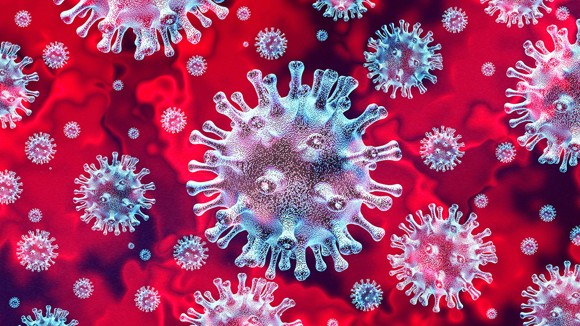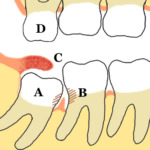People often know the name of a disease, such as measles but not the name of acute and respiratory syndrome-like Coronavirus. At the start of December, no one knows about any kind of disease that occurred due to Coronavirus.
After 19 December when scientists discovered a special kind of virus that fails human lungs within a short period of time and spreads rapidly due to human to human contact. After the discovery of virus in the world,
cientists think that it is a viral and infectious disease that will be controlled just after a few days. But everyone shocked when the Government of China announces for lockdown due to Coronavirus outbreak. It is a difficult decision that is taken by
the China Government for lockdown the industrial state of Wuhan city which exports 20% of China goods in the world.
American and other people took it lightly that’s why the Health Minister said this is not a acute virus but it imports from any other country
through a biological aspect. Donald Trump named this virus as Wuhan virus. It is a shameful behavior shown by the united nation.
The government of China faced the outbreak of Coronavirus and lockdown more than 30 Million people in their homes. Why? Because most people affected due to social contribution.
They announced to maintain social distance among people until if we don’t control the Coronavirus.
At that time the leaders of the world agreed for lockdown but China has done this. Now when we are writing this report. Wuhan city is opened for mandatory basis. And other countries are Facing Coronavirus outbreak.
Who knows about this virus that is discovered just in Wuhan city in the corner of the world and 30,000 people will be killed by this virus just after 3 months. While affected cases of this virus are more than 0.5 Million.
Now most affected countries that are facing Coronavirus outbreak include the USA, Italy, Spain, Iran, China and France.
What is COVID-19?

COVID-19 is an infectious disease caused by a new coronavirus introduced to humans for the first time. It is spread from person to person mainly through the droplets produced when an infected person speaks, coughs or sneezes.
These droplets can land in the mouths or noses of people who are nearby. These droplets are too heavy to travel far in the air they only travel approximately one meter and quickly settle on surfaces.
Coronaviruses are a family of single-stranded RNA viruses that have lipid envelope and cause disease in mammals birds including humans.
Coronaviruses cause respiratory tract infections such as common cold difficulty in breathing in premature infants.
And other infections that can be lethal such as SARS, MERS, and COVID-19. It also occurs in older people and those with underlying medical problems like high blood pressure, heart problem, and diabetes.
Discovery:
Human coronaviruses were first discovered in the late 1960s. The earliest ones discovered were an infectious bronchitis virus in chickens and two in human patients with the common cold. Other members of this family have since been identified,
including SARS-CoV in 2003 in China, MERS-CoV in 2012 in Saudi Arabia and SARS- CoV-2 in 2019 in China. Most of these have involved serious respiratory tract infections.
How did the first human SARS-CoV-2 infections occur?
The first human cases of COVID-19 were identified in Wuhan City, China in December 2019. At this stage, it is not possible to determine how many people were affected. The virus which causes the SARS outbreak in 2003 jumped from an animal to humans and then spread between humans.
Symptoms of COVID-19:
The COVID-19 virus affects different people in different ways. It is a respiratory disease and most infected people will develop mild to moderate
symptoms and recover without requiring special treatment. People who have underlying medical conditions and those over sixty years old have a higher risk of developing severe disease and death. By the World Health Organization.

Common symptoms include:
. Fever
. Tiredness
. Dry cough
Other symptoms include
. Shortness of breath
. Aches and pains
. Sore throat
. And very few people occur in diarrhea, nausea or a runny nose.
How is it Transmitted?
The new coronavirus is a respiratory virus which spreads through droplets generated when an infected person sneezes or cough,
or through droplets of saliva and discharges from the nose. It is also spread through person to person contact during handshaking and greeting.
How long is the time period for COVID-19?
The time period means the time between catching the virus and to have the symptoms of the disease. The most estimated time period of COVID-19 ranges from 1-14 days, most commonly around five days.
What is precaution?
- Wear a mask if you are coughing or sneezing.
- Masks are effective only when used in combination with frequent hand cleansing and with alcohol-based hand rub or soap and water.
- If you wear a mask, then you must know how to use it and disposed it properly.
Cover mouth and nose with a mask and make sure there is no difference between your face and the mask. - Hand washing precaution
Regularly and thoroughly wash your hands with soap and water or using alcohol-based hand rub kills the viruses that may be on your hands. - Wash your hand after coughing or sneezing, when caring for the sick, before during and after prepare food, before eating, after toilet use, when hands are visibly dirty, after handling animals or animal waste.
When coughing and sneezing cover mouth and nose with flexed elbow or tissue.
Other Precautions Include:

- Maintain social distancing at least 1 meter between yourself and anyone who is sneezing or coughing.
When someone coughs or sneezes they spray small liquid droplets from their nose or mouth which may contain a virus. If you are too close, you can breathe in the droplets, including the COVID-19 virus if the person coughing has the disease. - Avoid touching eyes, nose and mouth
Hands touch many surfaces and can pick up viruses. Once contaminated, hands can transfer the virus to your eyes, nose, and mouth. From where the virus can enter your body and can make you sick. - Practice respiratory hygiene
Make sure that people around you follow good respiratory hygiene. By following good respiratory hygiene you protect the people around you from viruses such as cold, flu and COVID-19. - If you have fever, cough, and difficulty in breathing, seek medical care
Stay home if you feel unwell. Seek medical attention and call in advance. Follow the direction of your local health authority. Calling in advance will allow your Health Care Provider to quickly direct you to the right health facility. This will protect you and help prevent the spread of viruses and other infections. - Stay informed on the latest developments about COVID-19 and follow the advice given by your health care provider to protect yourself and others from COVID-19.
How many Cases Of Coronavirus?
United States:
Confirmed: 7,756,441
Recovered Cases: 4,963,750
Death: 216,412
Italy:
Confirmed: 333,940
Recovered: 235,303
Death: 36,061
China:
Confirmed: 85,489
Recovered: 80,650
Death: 4,634
Great Britain

How long does coronavirus survive on the surface?
It is not certain how long the virus that causes COVID-19 survives on the surface but it seems to behave like another coronavirus.
It is suggested that coronaviruses may persist on surfaces for a few hours or up to several days. This may vary under different conditions like (temperature or humidity of the environment).
Solution:
To unite the world in the fight against coronavirus, we should bring the different categories of people in a series of engaging and to motivates and mobilize people to be Ready To Beat COVID-19.
. Send essential supplies such as personal protective equipment to frontline health workers
. Enable all countries to track and detect the disease by boosting laboratory capacity through training and equipment.
. Ensure health workers and communities everywhere have access to the latest science-based information to protect themselves, prevent infection and care for those in need.
. Accelerate efforts to fast track the discovery and development of lifesaving vaccines, diagnostics, and treatments.
Preventive Measures coronavirus outbreak.
We need to focus on preventive measures for ours, and global health During coronavirus outbreak:
- Focus on primary health care to improve access to quality essential services
- Work towards sustainable financing and financial protection
- Train the health workforce and advise on labor policies
- Improve access to essential medicines and health products
- Support people participation in national health policies
- Improve monitoring data and information
Thoroughly our work, we address:
- Human capital across the life-course
- Noncommunicable disease prevention
- Mental health promotion
- Antimicrobial resistance
- Climate change in the small island if developing states
- Eliminate and eradication of high impact communicable disease
End Point:
During the coronavirus outbreak everything matter for humans. But your lives is most important in this world. We need to educate ourselves.
Education can encourage students to advocate for disease prevention and control at home, in school and in their community by
talking to others about how to prevent the spread of viruses. Maintaining safe school operations or reopening schools after a closure requires many considerations but if done well, can promote public health.
Should Be INFORMED
Be PREPARED
Be SMART
Be SAFE
Be ALERT
Be READY to fight # COVID-19
















